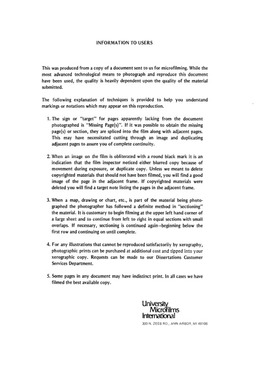| dc.contributor.author | Hadgopoulos, Marianthe Y., | en_US |
| dc.date.accessioned | 2013-08-16T12:28:26Z | |
| dc.date.available | 2013-08-16T12:28:26Z | |
| dc.date.issued | 1981 | en_US |
| dc.identifier.uri | https://hdl.handle.net/11244/4914 | |
| dc.description.abstract | In the legend of Courtesie, however, Greek romance is not simply a source of fictional material for allegory, but an enlivening influence on Spenser's art of romance. Here Spenser attempts an elaborate re-creation of the major narrative motifs, the uses of Fortune, the structure, and the tonality of the Greek romance. The result is a romance mode that works as a rich metaphor of experience which surveys reality from a perspective born out of a meaningful debate between the Art of chivalric idealism and the Nature of the sensory world of the Greek romance. | en_US |
| dc.description.abstract | The pervasive influence of the Greek romance on Elizabethan fiction and on Shakespeare's dramas has already been acknowledged in the works of Samuel L. Wolff and Carol Gesner. This study is a further assessment of the role of the Greek romance in Elizabethan literature. It examines the various ways that these ancient fictions became part of the artistic and moral considerations that shaped The Faerie Queene. | en_US |
| dc.description.abstract | The Faerie Queene bears the unmistakeable traces of Spenser's knowledge of at least three of the Greek romances best known during the Renaissance: Heliodorus' Aethiopica, Tatius' Clitophon and Leucippe, and Longus' Daphnis and Chloe. The poet derived these materials directly from the current continental and English translations of the Greek romances and also from well-known Renaissance intermediaries. | en_US |
| dc.description.abstract | In the first and sixth book of The Faerie Queene the mark of the Greek romance is clearly visible, while the middle books remain under Aristo's spell. The acclaim of Underdowne's three editions of Heliodorus' romance during the decade of the composition of the legend of Holinesse partly explains Spenser's choice of the Aethiopica as one of the major sources for Book I. On the other hand, the impact of Sidney's Arcadia on the literary climate in England in the years between the first and second installments of The Faerie Queene is greatly responsible for the fresh viewpoint of Book VI. Spenser wrote this book inspired by the challenge of the possibilities which had opened up in the matching of chivalry and Greek romance in Sidney's work. It is in the last complete book that the threads of the Greek romance weave a new design in the evolution of The Faerie Queene. | en_US |
| dc.description.abstract | In the legend of Holinesse the Aethiopica figures as a model of epic structure based on the framework of separation and reunion of the two lovers during a providentially designed journey to the heroine's homeland. This influence is basically conceptual and suggests the poet's conscious attempt to adapt the Heliodoran romance structure as the "imaginative groundplot" of the allegory of Holinesse. The same intention underlies Spenser's incidental borrowings of Greek romance materials for the building of the allegory of Temperaunce in the Amavia and Phedon stories, and for the allegory of Iustice in the episode of Britomart's visit to the temple of Isis. | en_US |
| dc.format.extent | v, 237 leaves ; | en_US |
| dc.subject | Literature, English. | en_US |
| dc.title | The Faerie Queene and the Greek romance. | en_US |
| dc.type | Thesis | en_US |
| dc.thesis.degree | Ph.D. | en_US |
| dc.thesis.degreeDiscipline | Department of English | en_US |
| dc.note | Source: Dissertation Abstracts International, Volume: 42-07, Section: A, page: 3164. | en_US |
| ou.identifier | (UMI)AAI8129430 | en_US |
| ou.group | College of Arts and Sciences::Department of English | |
